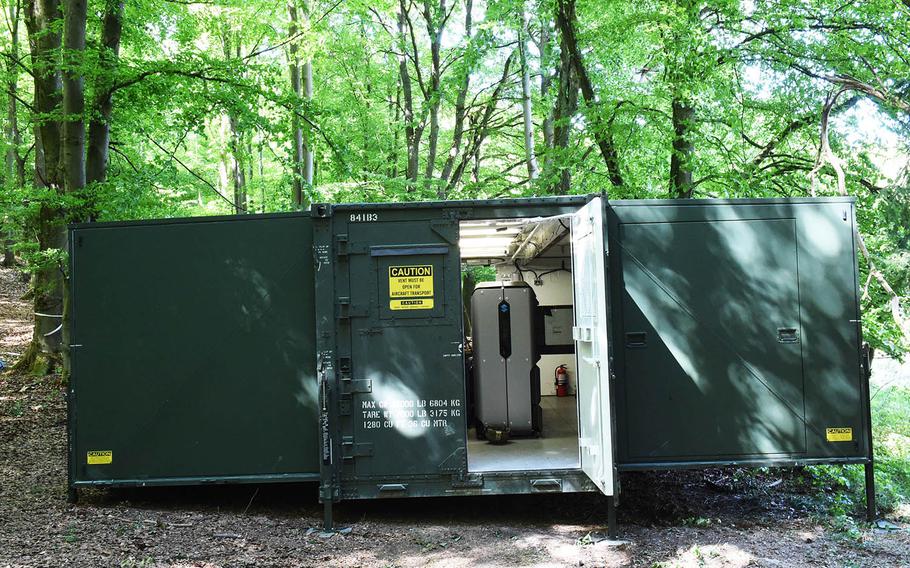
The Army's Rapid Fabrication via Additive Manufacturing 3D- printing unit, is being used at the Combined Resolve exercise in Hohenfels, Germany, Tuesday, May 8, 2018. (Martin Egnash/Stars and Stripes)
HOHENFELS, Germany – A 3D printing unit the Army tested during an exercise here this week could revolutionize how vehicles and other equipment are repaired on the battlefield.
The mobile unit, which was used in the field during the Combined Resolve 10 exercise, is called the Rapid Fabrication via Additive Manufacturing on the Battlefield — R-FAB, for short. The Army’s first attempt at 3D printing on a large scale in a battlefield environment appeared well-received by troops.
“I think it added quite a bit of value to the fight,” said Chief Warrant Officer 2 Rolando Rodriguez, who oversaw the printing during the exercise. “We were able to get systems up and running much faster than we would have been able to without it.”
The R-FAB is essentially several 3D printers and scanners, modified to fit in a large, easily transportable workstation. Its main purpose is to print out hard-to-acquire vehicle parts and equipment that would otherwise take a long time to deliver to a remote location.
Once during the exercise, soldiers used the printing unit to make a specialized ball valve for a water-carrying system that in the past might have taken as long as a year to get.
“If we couldn’t print it, a brigade would have been without a water system, so we would have had to have people bring water to them on the road, exposed to the enemy,” Rodriguez said. “Being able to do that kept them out of harm’s way and kept more soldiers in the fight.”
The R-FAB was used frequently during the exercise to create Humvee parts that are subject to a lot of wear and tear, such as door handles. In fact, many of the soldiers said the 3D-printed handles hold up better than the originals.
Besides crafting parts for vehicles, the R-FAB allowed soldiers to print custom modifications for their weapons, such as special foregrips and other accessories that aren’t standard issue for M4 assault rifles.
“One of our biggest customers were soldiers who wanted to customize their weapon systems. This made them just a little more personalized and comfortable to use, which increased their effectiveness,” Rodriguez said.
For now, the R-FAB prints items only in plastic, but printing in metal and other materials should eventually be possible.
“I think you’re going to see more (3D printing), as well as different types of materials, on the battlefield in the future,” said civilian adviser and 3D-printing expert Jason Langel. “Metal is one of the most frequently asked-for materials. It isn’t currently field-capable, but when it is, I think you’ll see it as well as other materials in the field environment.”
egnash.martin@stripes.com Twitter: @Marty_Stripes